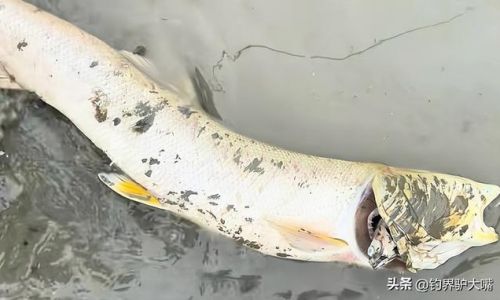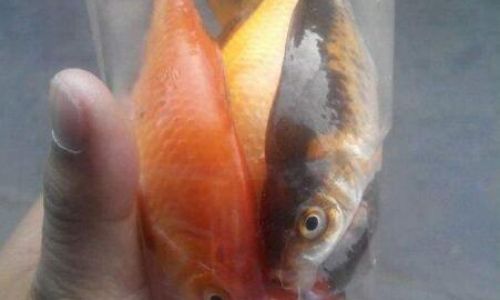Determining whether a fish is still alive can be a crucial skill, especially for aquarium owners, anglers, and anyone involved in the care or harvesting of aquatic life. A fish’s vitality is often indicated by subtle signs that, when observed carefully, can provide clear indications of its health status. This guide will delve into various methods and considerations to help you accurately assess whether a fish is alive or not. By understanding these indicators, you can ensure the well-being of your aquatic pets, make informed decisions about catch-and-release fishing, and maintain the quality of fish in commercial or research settings.
Observing Physical Movements
One of the most straightforward ways to determine if a fish is alive is by observing its movements. A healthy fish will exhibit active swimming patterns, whether it’s gliding smoothly through the water, darting around, or displaying specific breeding or feeding behaviors.
-
Swimming Patterns: A live fish will swim with purpose and control. It may change direction rapidly, dive, or surface as part of its natural behavior. If a fish is floating aimlessly, drifting with the current, or moving in erratic, spasmodic ways, these could be signs of distress or impending death.
-
Gill Movement: Another critical sign is the movement of the gills. In a live fish, the gills will flutter rhythmically as the fish breathes. This can be particularly evident in fish with external gill covers (operculum) that open and close with each breath. If the gills are not moving, it’s a strong indication that the fish is no longer breathing and is likely deceased.

-
Fin Activity: The fins of a live fish will often flutter or move slightly, even when the fish is at rest. Dead fish, on the other hand, will have fins that are limp and motionless.
Checking for Responsiveness
Fish respond to stimuli in their environment. Testing a fish’s responsiveness can provide additional clues about its vitality.
-
Touch Test: Gently tapping on the side of the aquarium or tank can startle a live fish, causing it to react, often by darting away or flickering its fins. A fish that does not respond to this stimulus may be dead or severely weakened. Be cautious with this method, as overly aggressive tapping can harm the fish.
-
Net Test: If you have a fish net, you can gently scoop the fish out of the water. A live fish will usually try to swim away or flick its tail and fins in response. A deceased fish will remain limp and unmoving.
Examining External Signs
Visual inspection of the fish’s external appearance can reveal a lot about its health status.
-
Coloration: Healthy fish typically have vibrant, consistent colors. Discoloration, fading, or patches of unusual color can indicate illness or stress, which sometimes precedes death. A fish that has lost its coloration and appears pale or dull might be dying or already deceased.
-
Eyes: The eyes of a healthy fish are clear and bright. Cloudy, bulging, or sunken eyes can be signs of disease or death. A dead fish’s eyes often appear dull and lifeless.
-
Body Shape and Condition: A live fish maintains a normal body shape, whether it’s streamlined for fast swimming or more bulky for bottom-dwelling species. A fish that appears bloated, bent, or has lost significant mass is likely unhealthy and possibly dying.
Assessing Internal Signs
While less commonly practiced due to ethical considerations, examining internal organs can provide definitive proof of death, especially in commercial or research settings where euthanasia might be necessary.
-
Gill Color and Condition: Healthy gills are usually pink or red, with a well-defined structure. Dead or dying fish may have pale, discolored, or slimy gills.
-
Body Rigidity: Rigidity in the body can be a sign of rigor mortis, which occurs after death as muscles stiffen. This is less reliable in fish due to their cold-blooded nature, but it can be observed in larger species or those that have been dead for some time.
-
Internal Organs: In a lab or commercial setting, opening the fish (a process called necropsy) allows for a direct examination of internal organs. Discoloration, inflammation, or the presence of parasites and diseases can confirm death and provide insights into the cause.

Checking for Vital Signs
Similar to mammals and birds, fish have vital signs that can be checked to assess their health.
-
Breathing Rate: While it’s challenging to count the exact number of gill movements per minute in a free-swimming fish, you can observe whether the fish is breathing at all. A lack of gill movement is a strong indicator of death.
-
Heart Rate: In some species and circumstances, it’s possible to feel or see the heartbeat near the gills or ventral surface. A lack of heartbeat signifies death. However, this method requires practice and is not always feasible.
Environmental Considerations
The environment in which the fish is found can also provide clues about its health.
-
Water Quality: Poor water quality can stress fish, leading to illness and eventual death. Check for indicators of good water quality, such as clarity, appropriate temperature, and sufficient oxygen levels. Dead fish are often found in environments with poor water quality.
-
Food Availability: Fish that haven’t been fed for an extended period may become weak and eventually die. Observing feeding behavior and ensuring adequate food supply can help prevent starvation-related deaths.
-
Predation and Competition: In natural settings, fish face predation and competition for resources. A missing fish or one found with injuries might have been preyed upon or outcompeted, leading to its death.
Ethical Considerations
When determining if a fish is alive, it’s crucial to handle the animal with care and respect. Avoid unnecessary stress or harm, especially when using methods like the net test or touch test. If you suspect a fish is dying, consider euthanasia methods approved by animal welfare organizations to minimize suffering.
Conclusion
Determining if a fish is still alive involves a combination of observing physical movements, checking for responsiveness, examining external and internal signs, and considering environmental factors. Each method has its strengths and limitations, and the most accurate assessment often comes from using multiple approaches. By being observant and respectful, you can ensure the well-being of aquatic life and make responsible decisions regarding their care and handling. Whether you’re a hobbyist, angler, or professional in the aquatic field, these guidelines will help you navigate the delicate task of assessing a fish’s vitality.
Remember, the care and ethical treatment of animals, including fish, is a responsibility we all share. By understanding how to determine if a fish is alive, we can contribute to the conservation and well-being of these fascinating creatures that enrich our lives and ecosystems.





0 comments